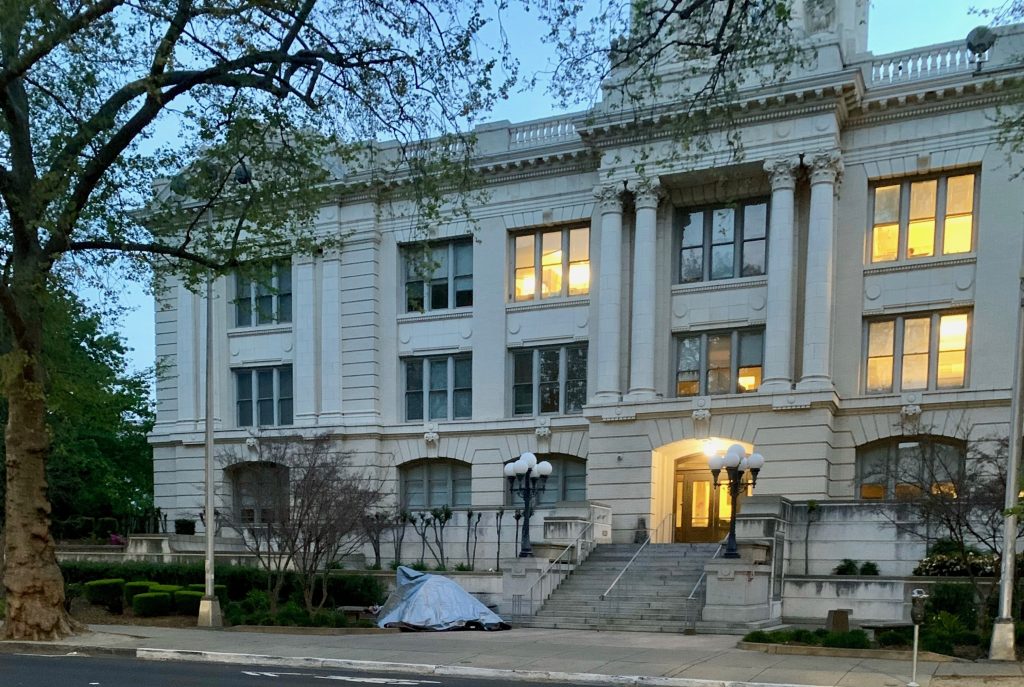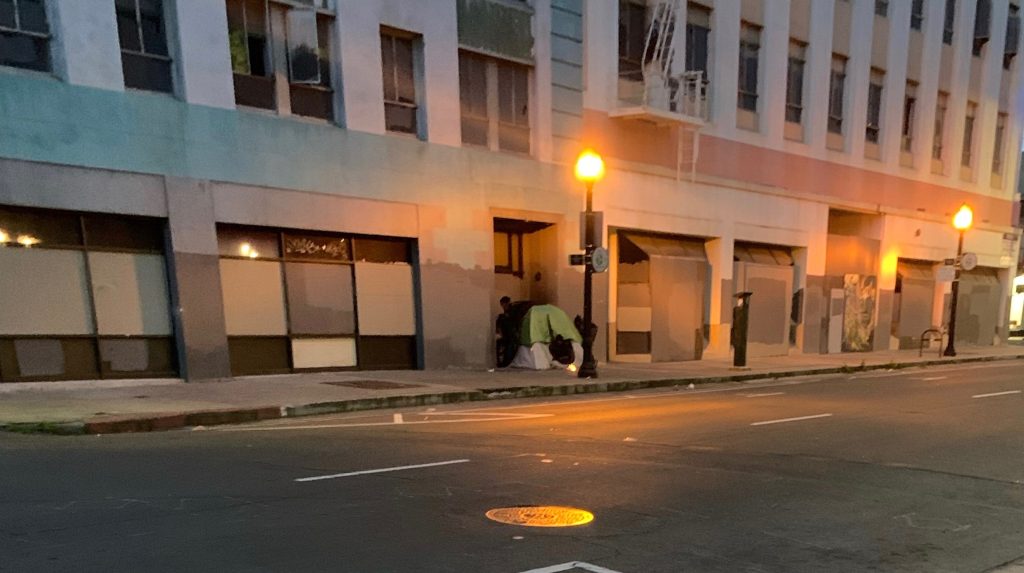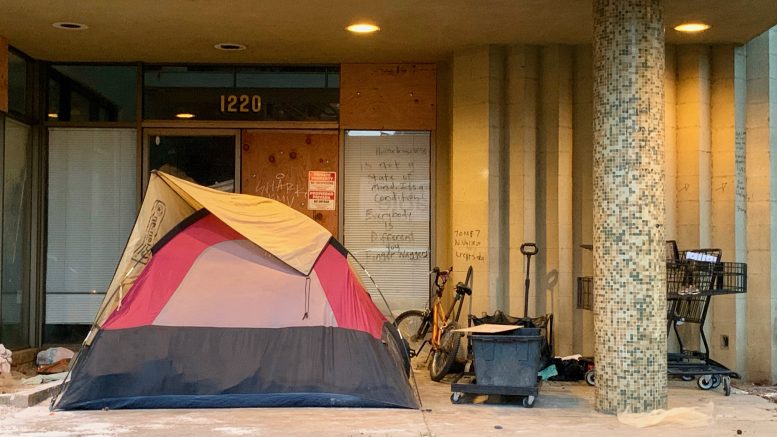By Alexander Musa
At least 227 people died on Sacramento County’s streets in 2023, despite increased spending to address homelessness.
Advocates say that limited access to healthcare remains a serious challenge that can prove fatal to the vulnerable unhoused population. They also argue that a continued focus on enforcing laws against street camping may be making the problem worse, calling on city leaders to provide more “safe ground” and focus on prevention tactics.
“We’ve been telling the city and the county for years to stop the sweeps because it makes it very difficult to locate people,” said Bob Erlenbusch, the executive director for the Sacramento Regional Coalition to End Homelessness.
Many homeless sweeps are intended to remove what some view as dangerous encampments from public property and sidewalks, or remove squatters from abandoned properties.
While many living on the streets do manage to access care through emergency room visits, or through organizations such as Loaves & Fishes, a significant portion of the population in Sacramento live in temporary encampments. When they are swept, advocates claim, the various city and county medical services initiatives may “lose” these individuals, limiting the continuity of care.
Advocates also claim that the sweeps mean that those living outside while suffering from chronic health conditions are more vulnerable to fatal complications. Erlenbusch said he has seen increasing numbers of deaths attributable to chronic conditions in Sacramento.
“If you look at the homeless deaths report, you know at least some of those deaths are preventable,” Erlenbusch noted. “Cardiac issues, diabetes, upper respiratory issues… What is easily managed if you live in a home becomes life threatening if you’re homeless.”

Epidemiologist and mayoral candidate Dr. Flojaune Cofer believes that the emphasis on anti-encampment laws and sweeps has contributed to a worsening of health care access and outcomes.
“When we engage in sweeps, we increase the chances that these people will die,” Cofer submitted.
Cofer’s mayoral campaign pushes for reducing emphasis on telling the unhoused where they can’t go, and to focus on providing “safe ground”. She believes such efforts would help improve health care access for the unhoused.
“The more we get a hold on the basics,” Cofer said, “the easier it will be for our institutions, which are reliant on consistency, to provide health care and other services.”
Crystal Sanchez, president of the Sacramento Homeless Union, said that sweeps are directly interfering with city and county-provided services, increasing the chances that they fail to connect with large portions of the unhoused population.
“What’s happening right now is we’re paying for law enforcement to perform sweeps to remove people from their encampments,” Sanchez said. “They’re basically moving them from block to block.”
The result, according to Sanchez, is that access to health care becomes more limited as homeless encampments are forced to leave areas where medical services may have previously located them.
But even at “safe grounds” such as Camp Resolution, and the recently-closed Miller Park, access is not always guaranteed.
“The narrative is that people should be able to call 2-1-1, get off the streets, get their mental health, get their housing, and get into rehabilitation, but that’s not what’s happening at all,” Sanchez observed. “Wait times for such assistance often exceed “a year, year and a half.”
As of last fiscal year, the city of Sacramento spent $57.3 million of the roughly $1.5 billion city budget to address the homelessness crisis. It is the latest high-water mark in spending on the unhoused after years of consistent increases; the city spent just over $10 million in 2015.
According to a statement from Mayor Darrell Steinberg’s office, there has been some progress in tackling homelessness. Sacramento currently operates over 1,300 emergency shelter beds at night, has expanded mental health resources outreach, and has adopted an incident command approach in response to growing unsheltered homelessness.
The city is “starting to see the results in fewer large encampments in our neighborhoods,” wrote Steinberg.
Despite the increased spending on these improvements, the county’s homeless population increased from 2,659 in 2015 to 9,278 in 2022 (and these numbers are considered under-counts).
Anthony Menacho, executive director of Sacramento Street Medicine, has been leading the non-profit onto the city’s streets since 2019, aiding those that the growing budget for the homelessness has failed to reach.
“We try to mimic primary care service,” Menacho said. “I practice family medicine, our original medical director practiced family medicine, our current medical director practices addiction medicine. For the most part it’s managing chronic conditions just as you would in a primary care clinic.”

Many of SacStreetMed’s patients do not live in designated safe grounds. If those encampments are swept by law enforcement, there is a real chance the former residents will not be seen again.
“Sometimes we have five, six patients in a particular area, and the next week they’re gone.” Menacho reflected, adding that he thinks the resources are available for Sacramento to do better through various avenues of support, particularly by major hospital networks.
“There’s more than enough clinics, there’s more than there’s more than enough hospitals,” Menacho asserted.
Comparing Sacramento to other cities of similar size, Menacho says he doesn’t “know many cities with more clinics or more hospitals: Just in Downtown there’s Sutter General, Mercy General, UC Davis. And they’re building the Kaiser hospital.”
From Sanchez’s perspective, the city government is increasingly unable to fully address the crisis with its current policies.
“The unhoused don’t trust people because they’re repeatedly promised things, or they’re repeatedly told something’s gonna go one way, and then it doesn’t,” Sanchez said. “We don’t have a real plan for homelessness. People don’t have the capacity for it, the nonprofits don’t have the capacity for it.”
The lack of trust for institutions trying to help the unhoused further limits outreach efforts. According to Erlenbusch, law enforcement is seen in an increasingly negative light by those who face sweeps from their encampments.
“The city county partnership touts that they’re taking a trauma-informed approach,” Erlenbusch points out. “If you were truly going to do a trauma-informed approach, you would not have law enforcement providing or trying to provide services to homeless people. As soon as the law enforcement officer walks up, no matter how well intentioned, it re-traumatizes people who are already extremely traumatized.”
Another concern is the continued dumping of unhoused emergency room patients back on Sacramento’s streets.
“Hospitals are not allowed to dump unhoused individuals, yet they do it every day,” Sanchez said. “Sutter on L Street is notorious for this.”
Patient dumping was directly addressed by the Hospital Patient Discharge Process bill, known as Senate Bill (SB) 1152. Authored by California state senator Edward Paul Hernández in 2018, SB 1152 was inspired by multiple patient dumping incidents reported by the Sacramento Bee. Homeless individuals were forced or allowed back onto the streets, sometimes still wearing hospital gowns while also bearing open wounds.
In a statement, a Sutter Health spokesperson highlighted a series of initiatives started by the not-for-profit. They include pioneering the respite care model in the “early 2000s, connecting individuals experiencing homelessness to a safe place to recover post hospitalization,” across Merced, Placer, Sacramento, Solano, Stanislaus and Yolo counties, leading to “dramatic improvements in the health outcomes of our patients.”
Sutter Health has also joined with Dignity Health, Kaiser Permanente, and UC Davis Health to contribute more than $15 Million in support of the Care Transition Innovation Center, the Interim Care Program (ICP), and ICP+, Sutter Health said.
To further address the needs of those on the streets, Sutter Health is partnered with WellSpace Health “to establish ED navigators on-site in our hospital emergency departments,” which included financial support for “18 specially trained navigators and case managers to link high-risk Sutter Health patients to a health home before discharge and provide social resources.”
However, Erlenbusch believes that the practice of patient dumping is not only ongoing, but that hospitals have gotten smarter about how to hide it.
“I understand the frustration of hospital discharge planners, there’s no place to send people,” Erlenbusch said. “That’s why we needed an increase in respite facilities. My suspicion is that hospitals now just let the person out the front door. They don’t get an Uber or Lyft to take them to a direct service program.”
He added that the strain on resources stems from a failure to address homelessness from a broader, more preventative perspective.
“As a community, we end homelessness all the time,” Erlenbusch acknowledged. “But when you end homelessness for one person and three more enter homelessness, we’re not turning off the spigot.”
Cofer compared the city’s approach to the homelessness crisis to the order of mathematical operations, PEMDAS.
“If you do things in the wrong order, it doesn’t matter how good you are at math,” Cofer emphasized. “You will get the wrong answer every time.”


Be the first to comment on "Advocates assert that sweeps of Sacramento’s homeless camps hinder the ability to provide healthcare"